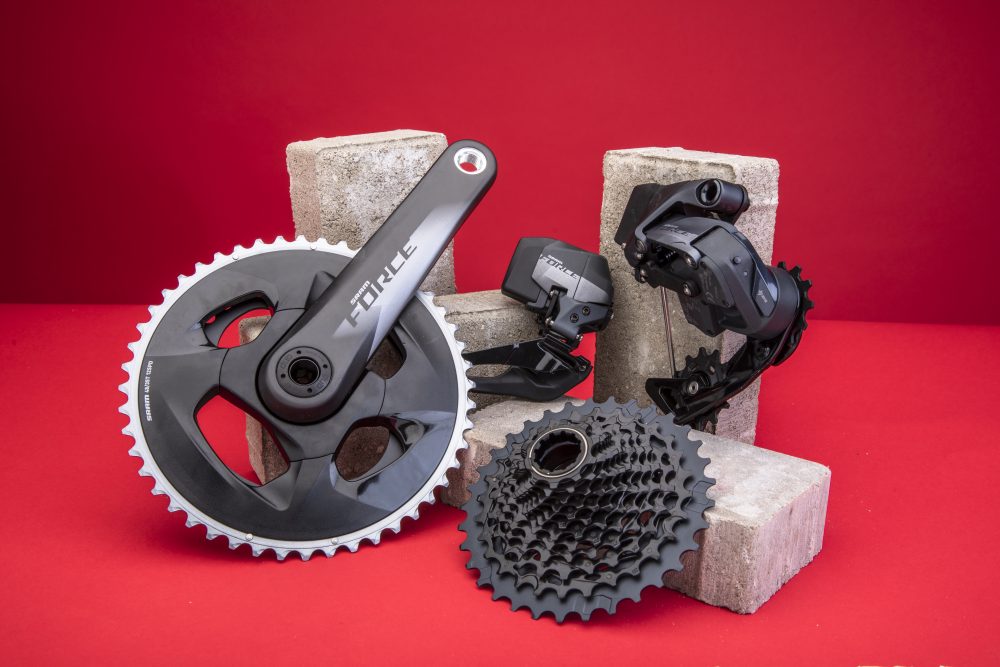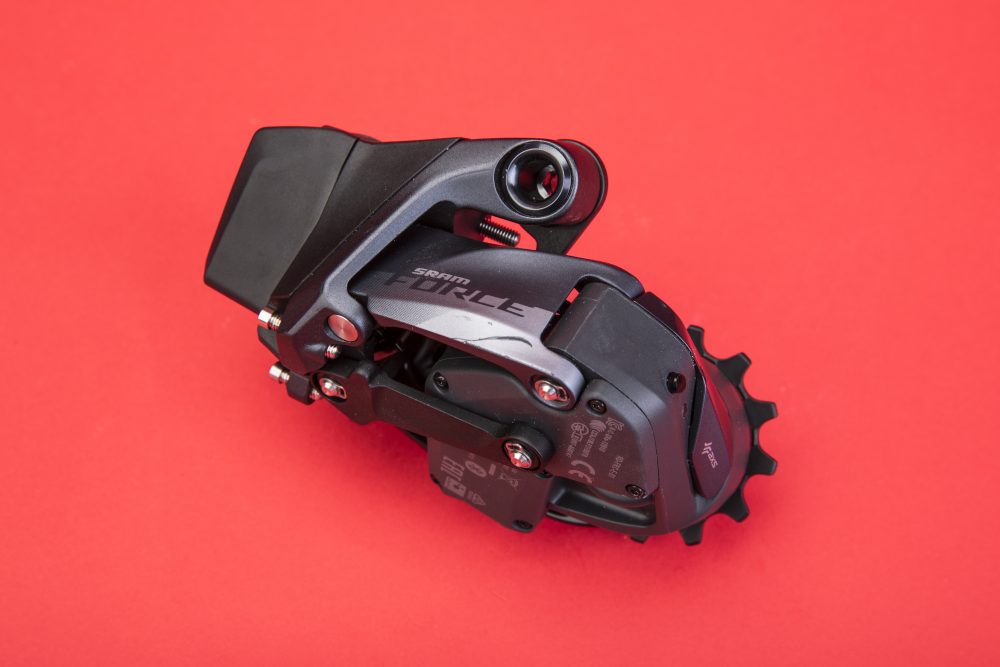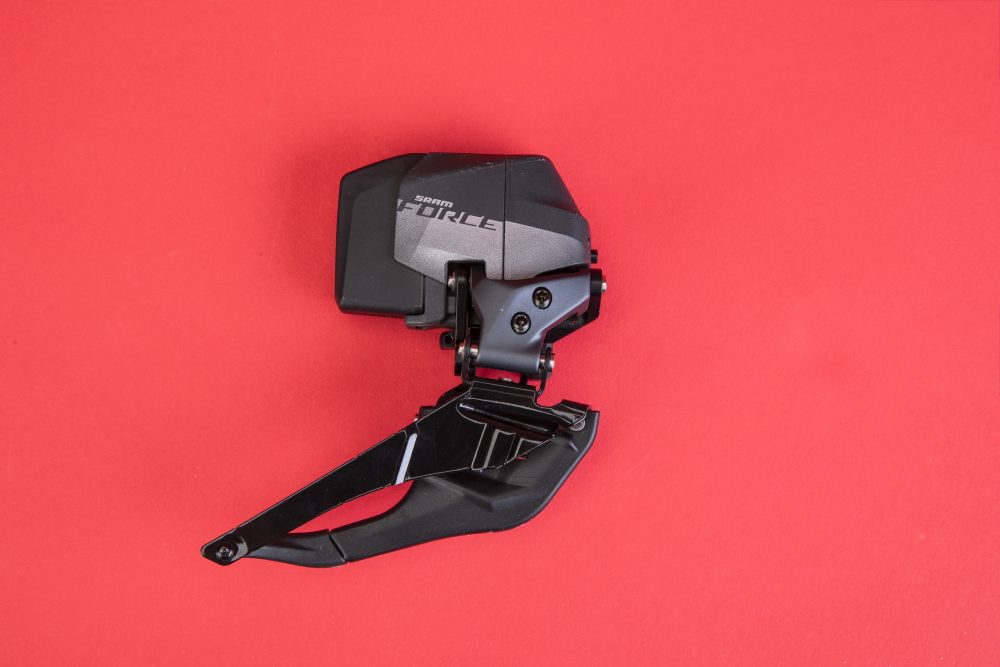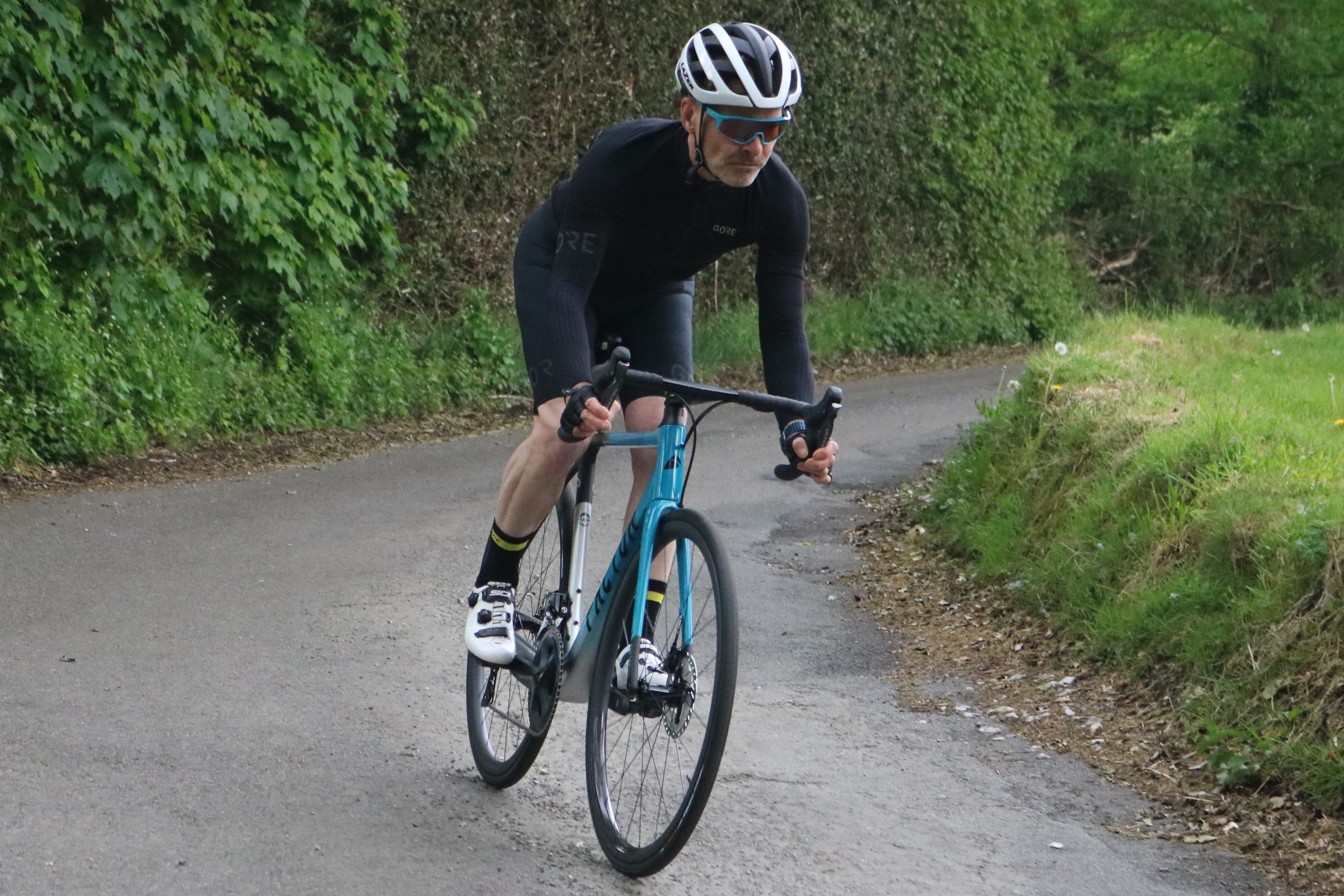SRAM Force eTap AXS groupset review
Same functionality as Red eTap AXS but for £1000 less: how does Force eTap AXS shape up?

SRAM Force eTap AXS gives you 12 speeds, all the tech and most of the range options of Red eTap AXS with a £1000 lower price tag and a 300g weight increase. It’s intuitive to use and easily configurable. The 10-33 cassette option gives you lots of range, so you can stay in the large ring for longer and get up hills easily.
-
+
Slick, sophisticated wireless shifting
-
+
AXS functionality and tunability for £1000 less than Red eTap AXS
-
+
Wide gear range means less front shifting
- +
-
-
Needs a wheelset with an XD-R cassette body
You can trust Cycling Weekly.

Launched four months after the big 12-speed update of its older sibling, Red. The Force launch was arguably the more hotly anticipated launches of the year, and it didn’t disappoint and so we had to include it in this years Editor’s Choice. Force is around £1000 and only around 300g heavier than Red. You still get 12 speeds and wireless gear changes, amazing!
Launched at the start of 2019 SRAM Red eTap AXS generated a lot of excitement with its enhanced wireless shifting, 12-speed cassettes and configurability.
So it came as a surprise that the brand followed up with its new second tier Force eTap AXS groupset only a couple of months after its flagship Red-level product. Force eTap AXS shaves around £1000 off the bill, but still offers the same functionality as Red.

>>> SRAM Red eTap AXS groupset review
That starts with the extra sprocket. But SRAM hasn’t just given you more ratios over the same range. It’s used the extra gear to extend the range while keeping the hardware to manageable proportions which fit in a conventional 11-speed frame.
It’s done that by offering cassettes which start with a 10-tooth smallest sprocket. Coupled with SRAM’s 48 tooth large chainring, that gives you a top gear ratio just smaller than a 53x11, but with a smaller, lighter front plate. At the back, there are options up to 33 teeth which, coupled to a 35 tooth inner chainring give exactly the same low ratio as a 34x32.
If you want a narrower gear spread, there are 10-26 and 10-28 cassettes available too. There’s a choice of either the 48/35 chainring tested or a 46/33, so you don’t get the 50/37 option offered by Red AXS. But you do get the same broad range of crank lengths between 165mm and 177.5mm in 2.5mm increments.
The latest race content, interviews, features, reviews and expert buying guides, direct to your inbox!
The wide range has another benefit: you can stay on the large ring over a wider range of terrain, as you’ve got a lower large ring ratio than, say, a 50x32 configuration. I certainly noticed that I was riding undulating terrain between the Chilterns and Oxford more in the large ring than I would normally. There was a tendency to push up slopes harder to stay on the big ring though – good for ride times, but not so much for fatigue levels.

The 10 tooth smallest sprocket means that SRAM AXS groupsets need a rear wheel with a SRAM XD-R cassette body. Many wheelsets can be converted without specialist tools and a few are sold with XD-R as an option. But a new XD-R cassette body often costs around £50, so it’s another cost to take into consideration if you want to upgrade a bike to a SRAM AXS groupset.
Force eTap AXS versus Red eTap AXS
The £1000 difference in price between Force eTap AXS and Red eTap AXS comes mainly as a result of less fancy materials, such as conventional rather than ceramic bearings in the rear mech’s jockey wheels, but the difference is rather less than you’d expect.
Whereas Red AXS gets a silver and black chainset with carbon arms and direct mount rings, Force eTap AXS makes do with rather less fretted chainrings with a conventional four arm spider. There’s the option to fit a Quarq DZero power meter with both groupsets.

The Force eTap AXS mechs are alloy and battleship grey, although the rear mech incorporates the same Orbit hydraulic damper mechanism as Red AXS, to help keep the chain under tension, ensure sharp shifting and avoid chainslap. Force eTap AXS uses the same rechargeable, removable batteries as Red AXS too, carried over from 11-speed Red eTap. Battery life is good and I didn’t make an appreciable dent in the charge level while testing.
Whereas the Red AXS cassette body is a single piece, milled into shape, Force eTap AXS has separate sprockets pinned together. There’s the same flat-topped design to the chain, engineered to add back the strength lost from the narrower profile.
The Force eTap AXS brake levers have the same size and shape as the Red AXS ones too. They are larger than Shimano’s, but I didn’t find them uncomfortable. There’s a wider area of soft rubber to rest your hands on when riding on the hoods and it comes with a grippy pattern on top. The brake levers themselves are also quite wide, leading to plenty of surface to grip, particularly if you’re braking from the tops.
The large single paddle on each lever is easy to operate too. Shifting is intuitive: left to change down the cassette, right to shift up, both together to change chainrings.

The swap down from Red AXS to Force eTap AXS is accompanied by a weight gain of just under 300g, from a quoted 2518g for Red AXS to 2812g for Force eTap AXS with two rings and disc brakes.
As with Red AXS, Force eTap AXS provides a choice of rim or hydraulic disc brakes and single or double ring chainsets. All use the same rear mech with a choice of mid or short cage. That provides a maximum cassette size of 33 or 36 teeth respectively, so in a single ring configuration you don’t get the range offered by SRAM’s 11-speed 10-42 cassette. If you want a wider range single ring option, Force eTap AXS is compatible with the Eagle AXS MTB rear mech, which can handle SRAM’s 10-50 12-speed cassette.
Tuneability
The AXS part of SRAM’s latest groupsets’ names refers to their Bluetooth connectivity to SRAM’s phone app. This allows you to configure the groupset, check battery status in each unit, update firmware and alter its functionality.
So, should you wish, you can swap the up and down functions of the shifters. You can also, as with Shimano’s latest Di2 groupsets, set front mech shifting to occur automatically.

>>> SRAM Red eTap AXS v Shimano Dura-Ace Di2: everything you need to know
Connecting to the Force eTap AXS groupset is a bit fiddly, requiring you to press buttons on the mechs and shifters to wake them up before pairing to the app. I updated the firmware in the two mechs and the shifters. This was easy enough, although the rear mech, which acts as the master unit for the groupset’s wireless network, went to sleep again during the downloads and needed to be reawakened.
There are two enhanced shifting modes available: sequential and compensating. These are equivalent to the enhanced shifting options in Shimano Di2.
Shifting down in sequential mode, once you’ve got to the end of the useful gear range on the large chainwheel, another downshift will swap the front rather than the rear mech, without you needing to initiate the change. At the same time, it shifts the rear up to reduce the jump in ratios. You can still hit both levers at once to make this happen manually too.
>>> Buy now: SRAM Force eTap AXS mechs, shifters and disc brake calipers from Evans Cycles for £1400
When shifting down, the chainring shift happens on the next to largest sprocket and cannot be reconfigured. By that time, there’s quite a lot of chain clatter and if you try to shift under load, you can get a bit of a jolt and crashing sounds. Upshift of the chainrings happens around the middle of the cassette, with a two sprocket compensating shift at the rear, and is a lot smoother.
In compensating mode you initiate the front shift, with the rear mech shifting up or down automatically, to maintain a comparable gear ratio. It’s slick and I did not find that it affected my rhythm or felt awkward.

You can also configure how many sprockets Force eTap AXS will upshift and downshift, with separate values for each, if you keep the shift lever held down. It’s all straightforward to configure and SRAM gives you a good level of in-app help, if you want additional guidance.
In summary
SRAM Force eTap AXS is a sophisticated groupset option, with a lot more about it than just 12-speeds instead of 11. It works really well, is easily configurable and gives you broad gear range options, all for a price just slightly more than Shimano Ultegra Di2. While the disc brake version has an SRP of £2274, rim brakes drop that to £2164. Go single ring and prices are £1924 with disc brakes and £1814 with rim brakes.
Paul started writing for Cycling Weekly in 2015, covering cycling tech, new bikes and product testing. Since then, he’s reviewed hundreds of bikes and thousands of other pieces of cycling equipment for the magazine and the Cycling Weekly website.
He’s been cycling for a lot longer than that though and his travels by bike have taken him all around Europe and to California. He’s been riding gravel since before gravel bikes existed too, riding a cyclocross bike through the Chilterns and along the South Downs.
